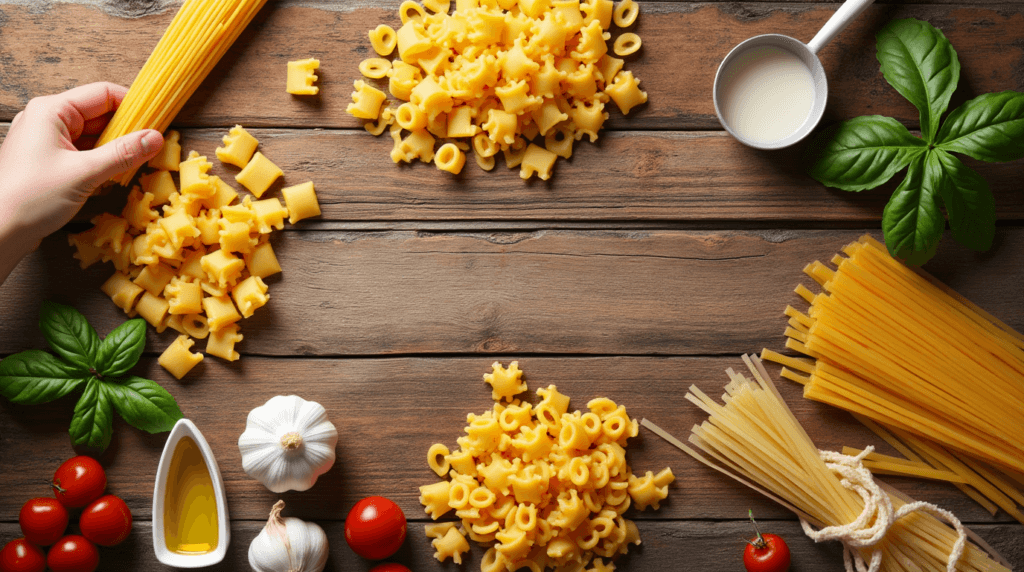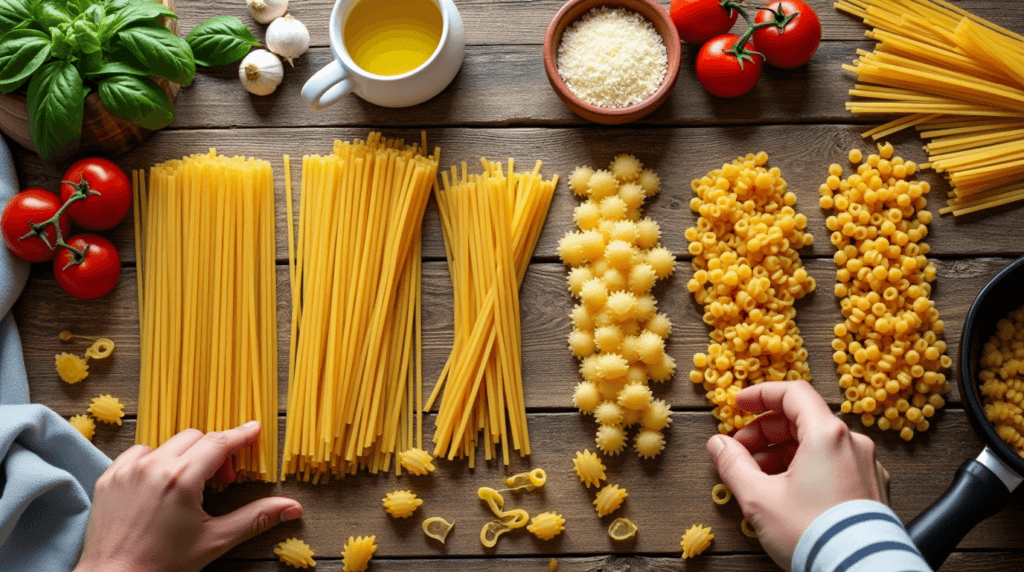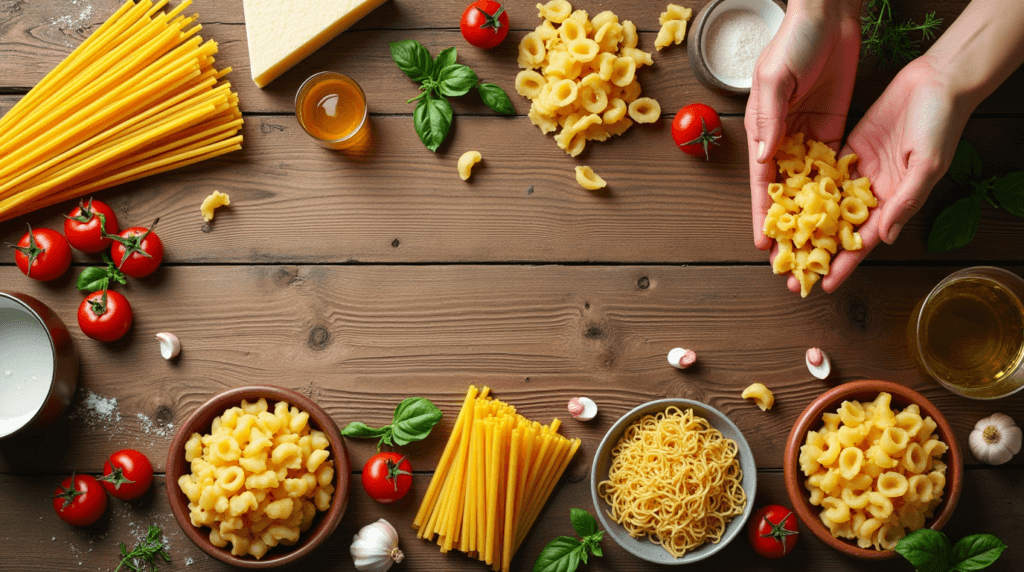Our Location
304 North Cardinal St.
Dorchester Center, MA 02124

Pasta – a dish that’s as versatile as it is delicious. Whether you’re cooking a hearty meal for the family or whipping up a quick dinner after a long day, pasta is a go-to option that never disappoints. But did you know that different types of pasta require different cooking methods? Understanding the nuances of each pasta type can elevate your dish and help you achieve that perfect bite every time.
In this guide, we’ll introduce you to 10 types of pasta and show you exactly how to cook them for maximum flavor and texture. Let’s dive in and learn the secret to perfect pasta every time!

Spaghetti is perhaps the most famous type of pasta worldwide. With its long, thin strands, it’s often associated with tomato sauce, meatballs, and bolognese.
Tip: For an extra authentic touch, finish cooking your spaghetti in the sauce for the last 2 minutes to help the pasta absorb the flavors.

Penne are short tubes of pasta with a diagonal cut. Their hollow shape makes them perfect for holding onto rich, creamy sauces like Alfredo or pesto.
Tip: Penne is often used in baked pasta dishes like baked ziti, where it’s layered with cheese, meat sauce, and baked until golden and bubbly.
Fusilli is a corkscrew-shaped pasta that is excellent for holding onto both thin and thick sauces. Its spiral shape helps trap sauce in its grooves, making every bite flavorful.
Tip: Fusilli pairs wonderfully with chunky meat sauces or vegetable-based sauces like ratatouille.
Farfalle is a type of pasta shaped like little bow ties, making it visually appealing in pasta salads, creamy dishes, and baked casseroles.
Tip: Farfalle is great in pasta salads since its shape holds ingredients together and absorbs flavor beautifully.
Tagliatelle is a flat, broad ribbon-like pasta, similar to fettuccine. It’s perfect for thick, hearty sauces like Bolognese or creamy mushroom sauces.
Tip: If you’re using fresh tagliatelle, cook it quickly to avoid overcooking and making it mushy.
Ravioli are square or round pockets of pasta filled with a variety of ingredients like cheese, meat, or vegetables. This pasta is perfect when you want something more substantial.
Tip: Be gentle when adding ravioli to boiling water to avoid breaking the delicate pockets. Also, don’t overcrowd the pot.
Linguine is similar to spaghetti but a little wider. It’s traditionally paired with seafood-based sauces, like clam sauce, or light olive oil dressings.
Tip: Linguine pairs wonderfully with seafood, such as shrimp or clams, and a drizzle of garlic-infused olive oil.
Orecchiette are small, round, ear-shaped pasta from Southern Italy, particularly great for holding chunky vegetable and meat sauces.
Tip: Orecchiette is best paired with hearty vegetable sauces like broccoli rabe and sausage.
Rotini is a short, spiral-shaped pasta with a lot of surface area for sauces to cling to. It’s great in pasta salads and baked dishes.
Tip: Rotini is a great option for baked pasta dishes, as its spiral shape helps trap cheese and sauce.
Macaroni is small, elbow-shaped pasta that’s best known for its use in mac and cheese, but it’s also great in soups and casseroles.
Tip: When making mac and cheese, cook the macaroni slightly under al dente so that it doesn’t get too soft when mixed with the cheese sauce.

Now that you know how to cook 10 popular types of pasta, you can experiment with different sauces, fillings, and cooking techniques to create endless delicious meals. Pasta is a versatile ingredient that can be adapted to virtually any flavor profile, so don’t be afraid to get creative!
Next time you cook pasta, try to pair it with the right sauce or use it in a baked dish for the perfect meal. Enjoy the process, and most importantly, enjoy the pasta!
There are no reviews yet. Be the first one to write one.